Chiropractic Adjustment in Tunisia
Search and Compare the Best Clinics and Doctors at the Lowest Prices for Chiropractic Adjustment in Tunisia

Find the best clinics for Chiropractic Adjustment in Tunisia
No clinics available
Singapore offers the best prices Worldwide
Price: $ 44

- Home
- Tunisia
Compare Before & After Photos of _procedure_photos.phpChiropractic Adjustment
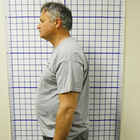
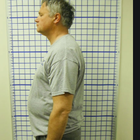
Full-side view
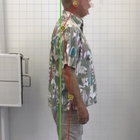
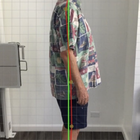
Full-side view
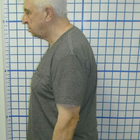
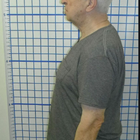
Full-side view

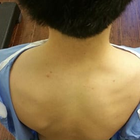
Full-side view
WHY US?
At Medijump, we're making medical easy. You can search, compare, discuss, and book your medical all in one place. We open the door to the best medical providers worldwide, saving you time and energy along the way, and it's all for FREE, no hidden fees, and no price markups guaranteed. So what are you waiting for?

Free

Best Price

Widest Selection

Risk-Free
What you need to know about Chiropractic Adjustment in Tunisia
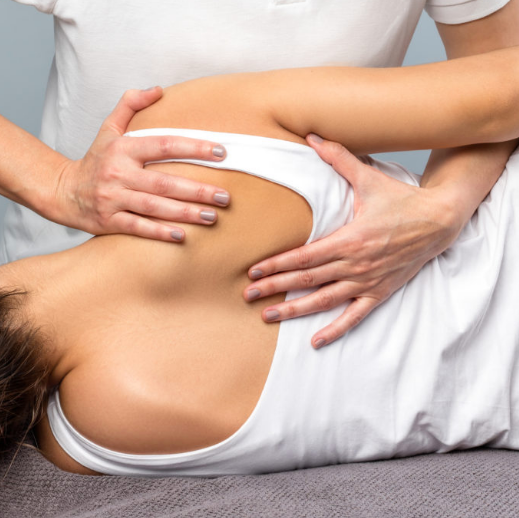
A chiropractic adjustment, also known as spinal manipulation, is a procedure that is performed to improve spinal motion and enhance the body’s physical function by bringing the bones of a joint back to their normal, natural position. The procedure is performed by trained specialists (chiropractors) who use their hands or a small instrument to apply a controlled, sudden directional thrust into a spinal joint. Besides chiropractors, physical therapists and osteopathic physicians may be trained and licensed to perform chiropractic adjustment as well.
Some of the most common conditions for chiropractic adjustment are low back pain, neck pain, and headache.
What is the cost of Chiropractic Adjustment in Tunisia?
Several variables, including the intricacy of the patient's illness, the chiropractor's experience, and the location of the clinic, can have a considerable impact on the price of the Chiropractic Adjustment in Tunisia. Budgeting for this treatment must take these things into account. Despite the cost, keep in mind that this is a safe, all-natural therapy option that could spare you from needing to undergo costly procedures or take prescription medication for an extended period of time.
What does a Chiropractic Adjustment Procedure Involve?
During a chiropractic adjustment, you will lie down on a specifically designed chiropractic table so the chiropractor can administer treatment. Your position on the table can vary depending on your problem or diagnosis. Most often, the chiropractor will ask you to lie face down. The chiropractor will use their hands to apply a controlled, directional force to a joint. This movement is designed to push the joint beyond its usual range of motion. You may hear cracking or popping sounds as your joints are moved by the chiropractor during a treatment session.
How Long Should I Stay in Tunisia for a Chiropractic Adjustment Procedure?
A typical Chiropractic Adjustment session takes around 30 minutes to an hour, depending on the complexity of the condition being treated. Since the procedure is non-invasive and has a minimal recovery period, you can leave the clinic immediately after the session. A chiropractic adjustment may require a series of visits, usually around 6 to 10 visits until you attain maximum improvement. You can travel to Tunisia multiple times for each visit, or you can stay in the area until you complete all treatment sessions.
What's the Recovery Time for Chiropractic Adjustment Procedures in Tunisia?
The recovery time varies for one person to another. In general, it is recommended that you rest for at least a day or two after each session of chiropractic adjustment, especially if you experience minor side effects, such as fatigue, headache, or pain in the parts of the body that were treated. You may also need to avoid strenuous activity until your condition is fully healed. Your chiropractor will give you a detailed recovery timeline.
What sort of Aftercare is Required for Chiropractic Adjustment Procedures in Tunisia?
While receiving a Chiropractic Adjustment doesn't necessitate a specific aftercare routine, following certain guidelines can amplify its benefits and support overall. Your chiropractor will give you specific aftercare instructions which may include:
-
Drink plenty of water. Keep drinking more than the normal amount for several days to keep your body properly functioning and healthy.
-
Keep moving. Avoid sitting for long periods of time and try going for a long walk or take a bike ride. If you need to go back to work, it is best that you utilize a standing desk.
-
Move carefully. While you need to stay active, you should not overdo it.
-
Do the exercises that your chiropractor gives you.
What's the Success Rate of Chiropractic Adjustment Procedures in Tunisia?
According to the National Center for Complementary and Integrative Health (NCCIH), chiropractic adjustment has been proven to provide relief for mild and moderate low back pain. The success rate of Chiropractic Adjustment is quite high, with studies showing approximately 80% of patients experience relief from their symptoms. Many patients in Tunisia have reported significant improvements in their health, mobility, and quality of life after receiving chiropractic adjustments. Keep in mind, however, that success rates can vary depending on the individual's health conditions and how they respond to the treatment.
Are there Alternatives to Chiropractic Adjustment Procedures in Tunisia?
Massage therapy, exercise, and physical therapy offer similar results to chiropractic adjustment. Other alternatives to chiropractic adjustment include painkillers, spinal fusion surgery, or nerve treatment.
It's important to remember that what works best vary from person to person, and sometimes a combination of treatments is most effective. Make sure to consult your doctor for the best treatment for your specific case. Your health should always be the top priority, and there's no one-size-fits-all solution to any condition.
What Should You Expect Before and After the Procedure
Before the Chiropractic Adjustment, your chiropractor will perform a comprehensive assessment to understand your health condition better. This includes a physical examination, medical history review, and possibly, imaging tests. Understanding your Health Conditions and issues in depth helps the chiropractor to customize a treatment plan that suits your needs.
After the procedure, it's common to feel some immediate relief. However, some patients might experience minor side effects, such as discomfort in the treated area, headaches, or fatigue. These symptoms usually go away within a few hours or days. Your condition will likely improve, the pain should disappear, and you will feel reenergized. Generally, a successful chiropractic adjustment will improve your quality of life
What are the Potential Risks of Chiropractic Adjustment?
Overall, the procedure is considered safe. Minor and temporary side effects (headache, sore joints, dizziness, fatigue) occur in 23% to 83% adult patients. Serious risks that can be debilitating are very rare, ranging from 1 per 2 million adjustments and 13 per 10,000 patients. These serious risks include:
-
Spinal cord injury
-
Spinal disk injury
-
Stroke
-
Cauda equina syndrome.
Can children and teens receive Chiropractic Adjustment?
Indeed, youngsters and adolescents can securely undergo Chiropractic Adjustment. Chiropractic care is experiencing heightened popularity as a precautionary healthcare approach amongst budding populations, serving as a boon to their developing bodies while fostering salubrious habits. This treatment can assist with posture-related concerns, sporting traumas, back and neck discomfort, and events extend to conditions like asthma and ear infections.
Is Chiropractic Adjustment safe for pregnant women?
Yes, it is widely recognized that expecting women can safely undergo chiropractic adjustments. Numerous pregnant women seek chiropractic care to address common discomforts like sciatica and backaches. It can expedite labor and childbirth duration, manage nausea symptoms, sustain a healthier pregnancy, and potentially prevent a caesarean delivery. Nonetheless, it's indispensable to always consult with your doctor prior to undergoing any medical treatments during pregnancy.
The techniques used by chiropractors while administering adjustments on pregnant patients are designed to avoid abdominal pressure. They also provide secure and beneficial prenatal exercises and stretches. To ensure the safest and most effective treatment, it's crucial to furnish your chiropractor with a precise and thorough medical history, inclusive of details pertaining to your pregnancy.
Whilst the information presented here has been accurately sourced and verified by a medical professional for its accuracy, it is still advised to consult with your doctor before pursuing a medical treatment at one of the listed medical providers
No Time?
Tell us what you're looking for and we'll reachout to the top clinics all at once
Enquire Now

Popular Procedures in Tunisia
Prices Start From $400

Prices Start From $21

Recommended Medical Centers in Tunisia for procedures similar to Chiropractic Adjustment

- Interpreter services
- Translation service
- Religious facilities
- Medical records transfer
- Medical travel insurance
- Health insurance coordination
- TV in the room
- Safe in the room
- Phone in the room
- Private rooms for patients available

- Interpreter services
- Translation service
- Religious facilities
- Medical records transfer
- Medical travel insurance
- Health insurance coordination
- TV in the room
- Safe in the room
- Phone in the room
- Private rooms for patients available

- Interpreter services
- Translation service
- Religious facilities
- Medical records transfer
- Medical travel insurance
- Health insurance coordination
- TV in the room
- Safe in the room
- Phone in the room
- Private rooms for patients available
Chiropractic Adjustment in and around Tunisia
About Tunisia
Tunisia is one of the few countries which can cater to everyone and it manages to combine climate, golden beaches, history, and shopping for an “all-around” experience. It has a high standard of healthcare and an excellent reputation for cosmetic surgery. Cosmetic and plastic surgeons are regulated by the Tunisian Ministry of Health and the private clinics have state-of-the-art equipment and English-speaking staff. Tunisia welcomes an ever-increasing number of medical tourists each year, many of whom travel for Chiropractic Adjustment procedures. Medical Tourists travel from all across the globe, particularly from Europe and neighboring African countries with an inferior healthcare system. Popular medical tourism destinations outside of the capital, Tunis, include Sousse and Mahdia
Popular Parts of Tunisia
- Tunis, the country’s capital, is overflowing with a history that dates from the 4th Century BC. The city is divided into two parts, the old city known as the medina and the new city (or Ville nouvelle in French). Many tourists visit Tunis to see the Archaeological Site of Carthage which is also a UNESCO World Heritage Site. The beautiful Islamic architecture in medina also attracts many tourists to the city.
- Tozeur is known as a home to an enchanting desert oasis, which was a place to rest and refuel for caravans crossing the Sahara. Another main attraction in the city is the medina, where tourists can find lines of beautiful brick-patterned traditional dessert houses. Chott el Djerid, Sahara’s largest salt pan, is a popular day-trip destination.
- Sousse is located on the coast of the Mediterranean Sea. It offers good beaches with a clear blue sea. The city has been fought over by the Romans, Arabs, and Europeans, giving it a colorful history and culture. Sousse Archeological Museum is one of the most visited sites in the country; it has the second largest collection of mosaics in the world.
- Hammamet is the country’s original tourism resort. The city has beautiful gardens filled with oranges, lemons, and other citrus plants. It also has wonderful sandy beaches with crystal clear water. Just like any other city in Tunisia, this city is also brimming with interesting histories. Sites such as The Gafsa Museum and Bardo Museum will give insights about the Islamic faith and culture.
- Douz, also known as “the gateway to the Sahara.” Tourists who want to experience the Sahara Desert come to this city. Take a camel trip or a 4-wheel-drive into the Sahara or see the Museum of the Sahara that has an interesting collection portraying traditional Saharan life.
Weather and Climate in Tunisia
The North of Tunisia has a subtropical Mediterranean climate with mild rainy winters and hot summers. The South and inland areas have a tropical desert climate.
The weather is relatively comfortable throughout the year. Summer starts in June and lasts until August. The average temperature is between 28 °C to 32 °C with July and August being the hottest months. The heat is not as bad on the coast because of the seaside breeze. Be aware that July to September is the jellyfish season.
The heat decreases in autumn and the weather is somewhat more comfortable. There are occasional rain showers in September. The temperature in October can be like summer during day time, but cold at night. October has more rain than September. The season lasts for three months from September to November with an average temperature of around 19 °C to 29 °C.
The weather in winter can be uncertain. The average temperature is between 16 °C and 18 °C, but it can drop to 7 °C at night and below 0 °C in highlands and deserts and a clear sky is rare during this season.
Spring comes in March and the temperature can rise to 20 °C. Mornings and nights are cold; there is still a high probability of rains and thunderstorms at the end of this season.
Getting Around in Tunisia
Tunisia has several international airports. The main airport is Tunic-Carthage International Airport. It has international connections with major European countries and the Middle East. The airport is the hub for Tunisair, Tunisair Express, and Nouvelair. Other airports that have international flights are Enfidha-Hammamet, Monastir Habib Bourguiba, Djerba-Zarzis, and Tabarka-Aïn Draham.
Taxis and buses are available to get to the city center from Tunis Airport. The SNT bus line departs every 30 minutes from the airport, the ticket costs less than 1 TND. There is also the TUT bus which departs every 15 minutes and is more luxurious and expensive.
Airport taxis are available at the airport taxi stand and are usually metered. Always make sure that the driver turns the meter on before riding the taxis. A journey to the city should cost around 5 TND. An extra cost will be added if you have baggage.
Getting around in Tunisia can be done by several transportation modes. Tunisair Express provides domestic flights between Tunis, Tozeur, Djerba, and Gabes. The Train is also available and the national train company in the country is SNCFT that runs modern and comfortable trains from Tunis to Sousse, Sfax, and Monastir. There are three classes of service that tourists can choose. The fare from Tunis to Sousse is between 6 to 10 TND. The long-distance bus is an economical option to travel between big cities such as Tunis, Hammamet, and Nabeul. The buses usually depart every 30 minutes.
Tourist Visas in Tunisia
Citizens of 97 countries (including Australia, China Singapore, the United States, and Russia) can visit and stay in Tunisia for up to 90 days without a visa. Other nationalities are advised to check with their local Tunisia embassy. Tunisia provides an online visa application for nationalities that needs a visa to enter. The eVisa will simplify the process of obtaining travel authorization to enter the country.
Additional Information
-
Local Currency: the local currency is the Tunisian dinar (TND). 1 USD converts to 2.61 TND.
-
Money & Payments: ATMs can be found in most cities and in all tourist areas. Many ATMs have withdrawal limits of 400 TND. Credit cards (MasterCard and Visa) are accepted in major cities and tourist areas. They can be used for shops, car hire, or top-end accommodation. Always make sure to carry cash if you want to travel outside major cities. Tipping is not necessary but will be appreciated.
-
Local Language: Arabic is the official language of Tunisia. French is very common due to the country’s former status as a French protectorate. English is still very limited except in the tourist areas and expensive hotels.
-
Local Culture and Religion: Islam is the major religion with 98% of the population identified as Muslim. There is a small group of Christian and Jews. Since most of the population is Muslim, always remember that the dress code is important in Tunisia.
-
Public Holidays: Tunisia celebrates major Islam holidays. The country hosts several annual festivals throughout the year such as The International Festival of the Sahara, Yasmine Hammamet Festival, and the International Festival of Carthage.
Popular Searches
- Plastic Surgery in Thailand
- Dental Implants in Thailand
- Hair Transplant in Thailand
- Breast Augmentation Thailand
- Gastric Sleeve in Thailand
- Gender Reassignment Surgery in Thailand
- Laser Hair Removal in Bangkok
- Botox in Bangkok
- Dermatology in Bangkok
- Breast Augmentation in Bangkok
- Coolsculpting in Bangkok
- Veneers in Turkey
- Hair Transplant in Turkey
- Rhinoplasty in Turkey
- Stem Cell Therapy in Mexico
- Rhinoplasty in Mexico
- Liposuction in Mexico
- Coolsculpting in Tijuana
- Rhinoplasty in Korea
- Scar Removal in Korea
- Gastric Sleeve in Turkey
- Bone Marrow Transplant in India
- Invisalign in Malaysia
- Plastic Surgery in the Dominican Republic
- Tummy Tuck in the Dominican Republic
- Plastic and Cosmetic Surgery in Poland
- Rhinoplasty in Poland
- Hair Implant in Poland
- Dental Implants in Poland
- IVF in Turkey